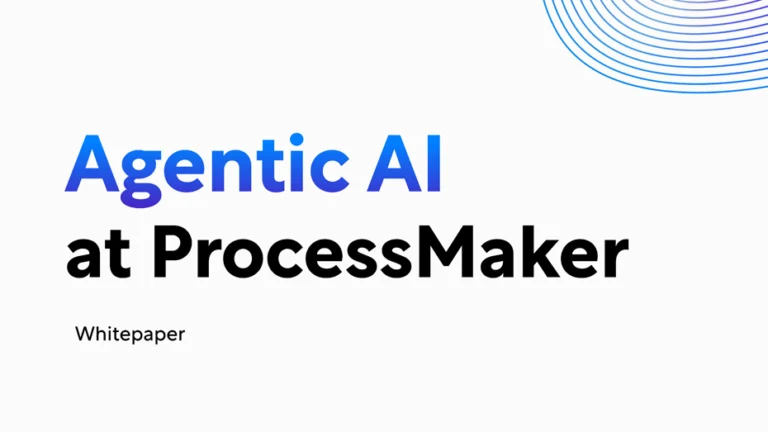What is business process improvement and why is it important?
Business process improvement involves identifying, analyzing, and improving an organization’s business processes to optimize performance and/or improve quality. Some common ways that organizations attempt to improve their processes include reducing the time that it takes to complete tasks, eliminating waste, improving the quality of its products or services, and ensuring a higher level of compliance.
Business process improvement steps
While there are no universal formulas for business process improvement, the following steps provide an excellent framework for planning, implementing, and optimizing processes:
- Mapping the process
- Analyzing the process
- Redesigning the workflow
- Assigning resources
- Developing an implementation plan
- Executing the plan
- Monitoring and optimizing
Improving business processes
Business process improvement can be an invaluable tool for any organization, regardless of its size or industry. Note that manually completing the above business process improvement steps can be a time-consuming process. Organizations can save a significant amount of time and money, while gaining additional insights by using business process management software that enables simplicity in business process improvement.
Mapping the process
Business process mapping is an invaluable tool that is used early in the business process improvement process. Business process mapping is a visual representation of work processes. It defines what a company does, how it is done, and who is responsible for completing each task.
Identify the process that you want to improve. Map out the existing process to gain a good working overview and reference point. You can create your map manually or simplify the process using our workflow software.
Analyzing for potential improvements
Spend some time reviewing the map that you created in the first step. Try to identify areas in the process where bottlenecks and other problems occur. Focus on areas where there are significant delays, or where too much time and money are expended. From there, trace the issue back to its likely source.
Don’t rush this step. If you fail to identify the root causes of problems, then you will be unable to successfully complete the remaining steps in creating a business process improvement.
Redesigning the workflow
In this step, you will work on redesigning your workflow to improve the issues that you identified in the previous step. It is important to involve your key stakeholders in this process. They know the existing workflows better than anyone and will be integrally involved going forward. Discuss the issues that you found with them and get their input on possible solutions.
List out all solutions that you identified. For each, determine how long it would take to implement, what the costs are, as well as the potential risks.
Assigning resources
Once you have identified potential solutions then you can begin assigning roles and delegating resources. Let stakeholders know how the changes will impact their roles and what resources will be available to them. Explain what the new workflow will look like and how the improvements will benefit the organization. This will both reduce anxieties over resistance to change and set the stage for implementation.
Developing an implementation plan
This step is an extension of the previous one. Here, you will create a detailed plan that incorporates the stakeholders and resources that you have identified. Compile a list of specific tasks that each stakeholder will be responsible for. Create a detailed timeline that denotes the beginning and end of each task. Setting deadlines will ensure that the business process improvement remains on schedule.
Executing the plan
At this point you will share your implementation plan with key stakeholders. Explain what is expected of them and when their tasks must be completed. Continue to emphasize how the new processes will benefit individual stakeholders as well as the organization.
Keep in mind that business process improvement can involve implementing entirely new teams or systems. Incorporating new team members and systems can be massive undertakings. Manage these smaller aspects much like you would the overall implementation process. Set deadlines and test new systems prior to process-wide implementation.
Monitoring and optimizing to continue business process improvement
No matter how much planning and testing you conducted throughout the implementation process, you will likely encounter some issues after the new process is rolled out. Make it a priority to regularly monitor your processes. Continue to rely on key stakeholders for feedback. Fix issues as they occur. Repeat the above steps to continually improve your processes.
Access Bank – Case Study
Access Bank is a multinational commercial bank based out of Africa. The organization sought ProcessMaker’s assistance with its international expansion efforts. Their existing business process management solution was unable to simultaneously service multiple channels to digitize the opening of new accounts. Moreover, their existing processes made it difficult to comply with regulations adopted following the global financial crisis.
With ProcessMaker’s banking automation platform, Access Bank was able to improve its processes through automation with minimal coding. The entire bank’s operational, legal, customer service, and compliance processes were optimized. Access Bank has continued to expand and is now larger than any other bank if Africa.
About ProcessMaker
ProcessMaker is a low-code business process management and workflow software. Its intuitive design enables simplicity in business process improvement. Headquartered in Durham, North Carolina in the United States, ProcessMaker has a partner network spread across 35 countries on five continents. Hundreds of commercial customers, including many Fortune 100 companies, rely on ProcessMaker to digitally transform their core business processes enabling faster decision making, improved compliance, and better performance.





